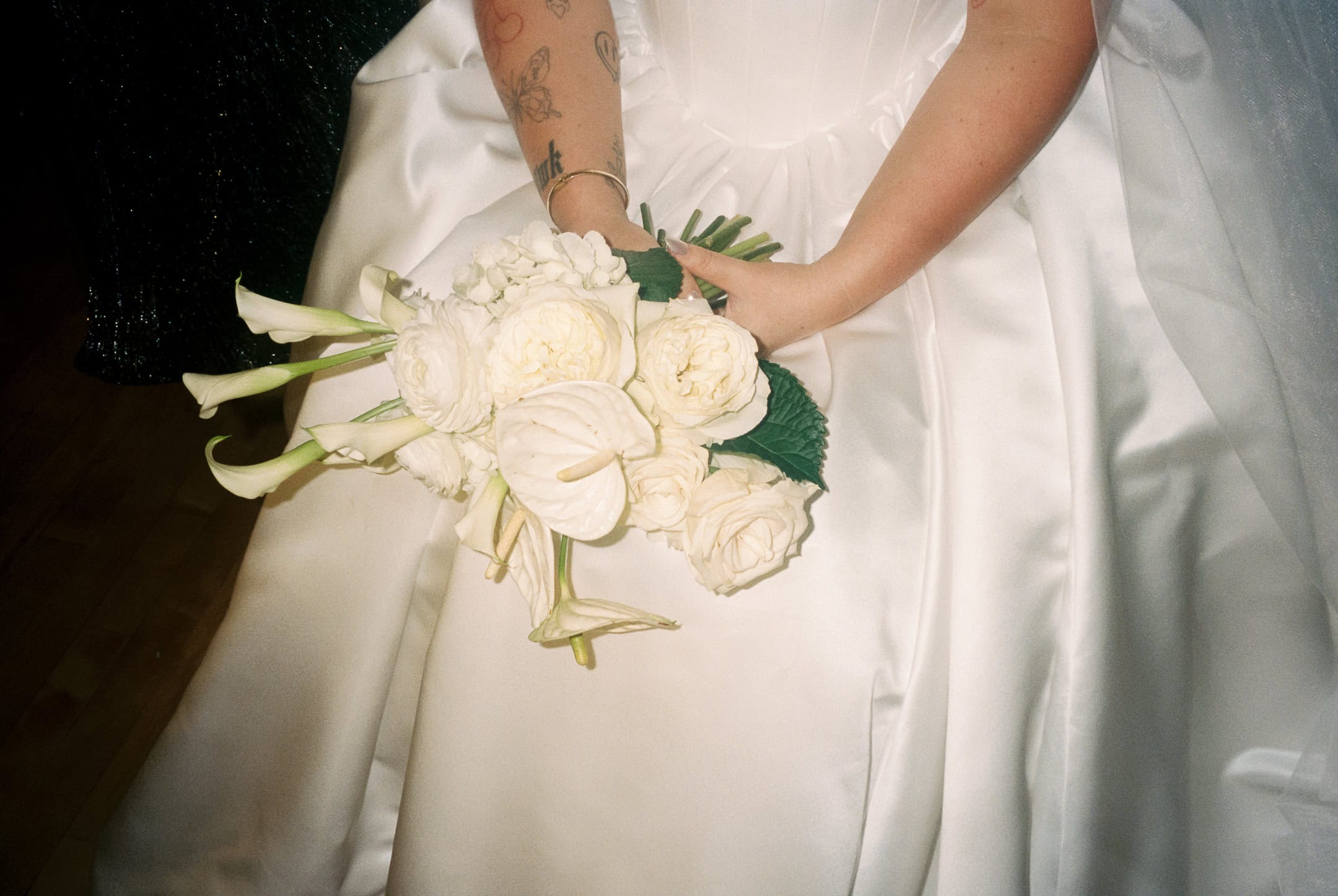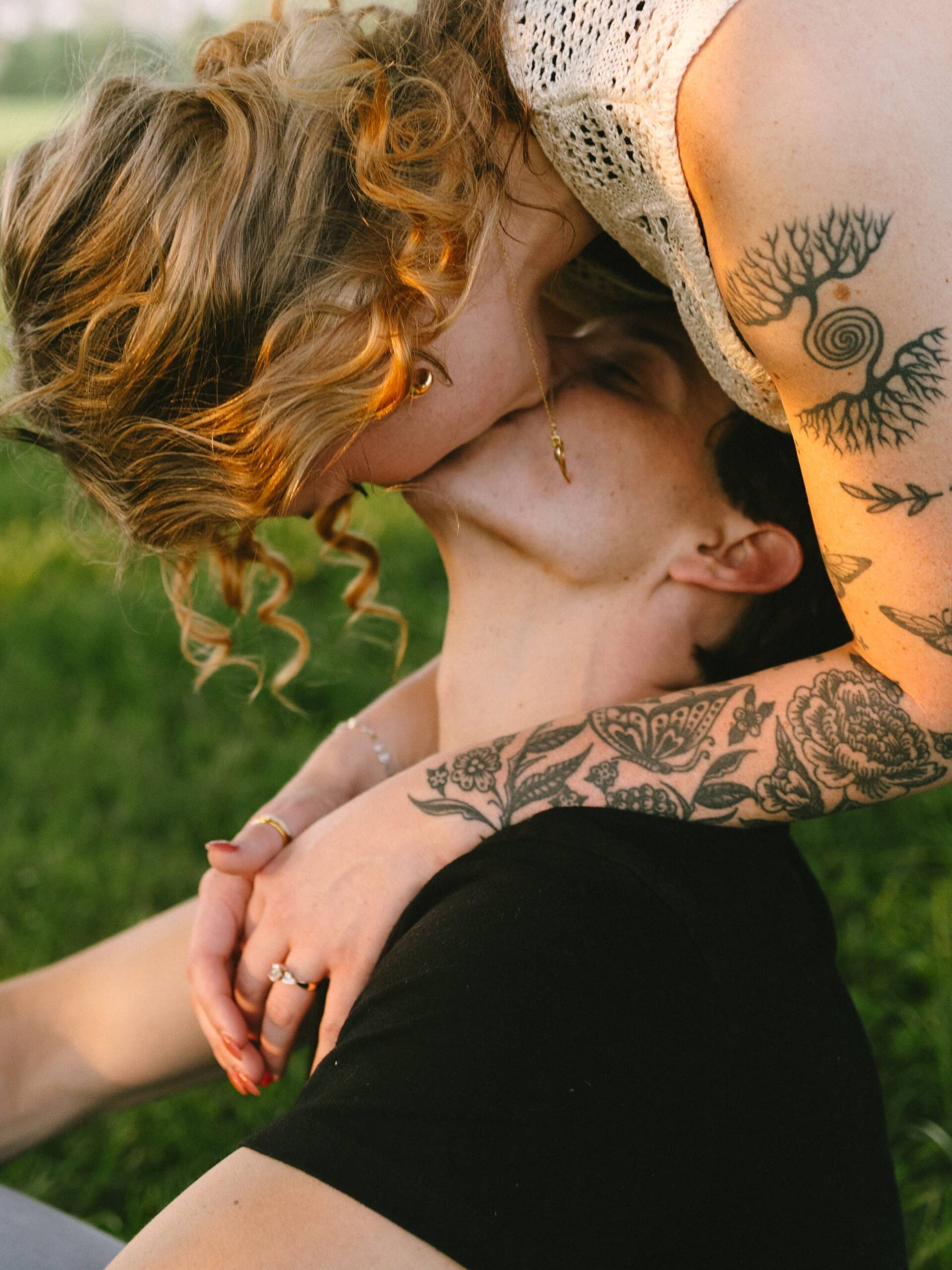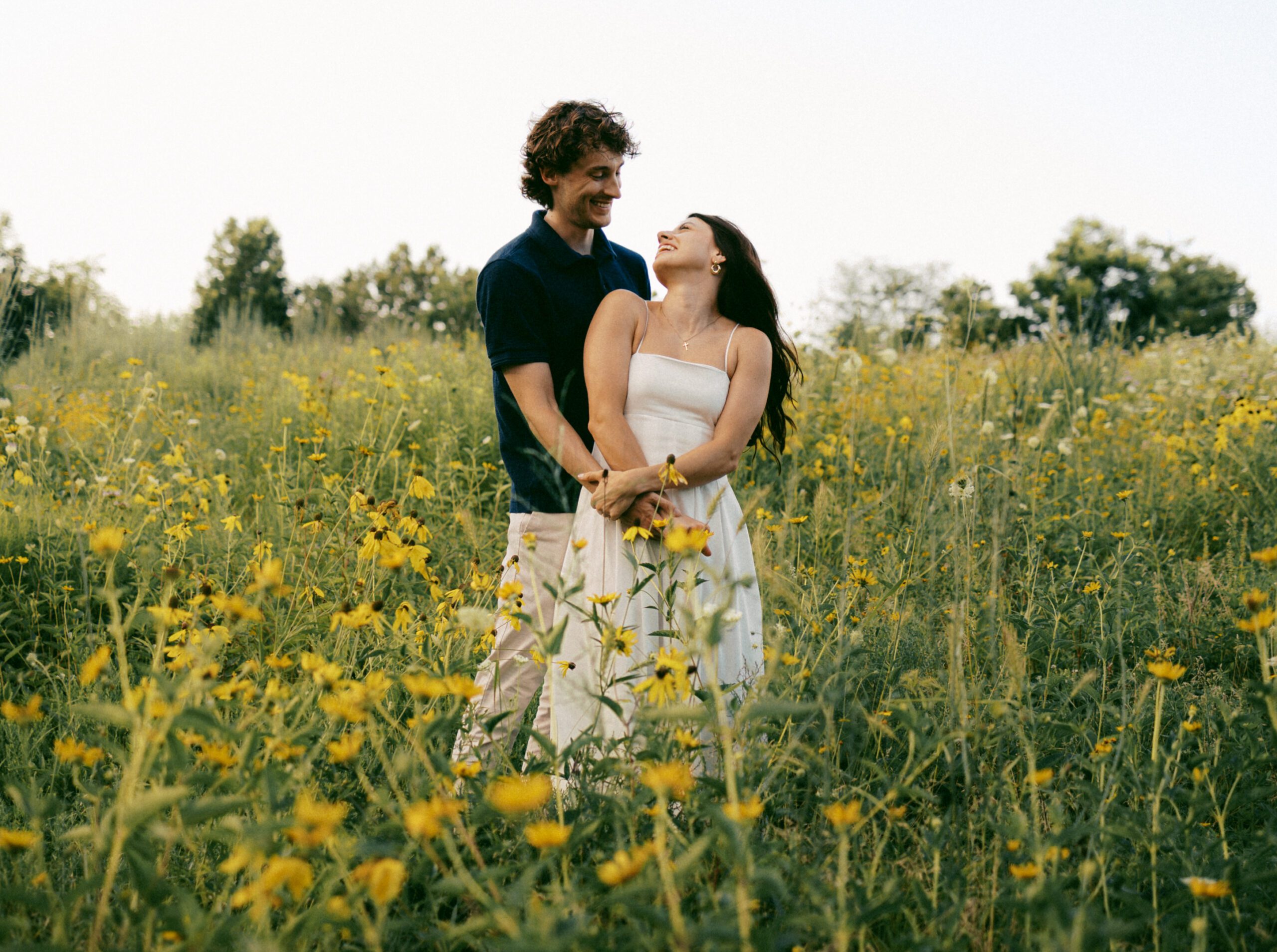Introduction
Curious about film photography for your wedding, but wondering what to expect? Film wedding photography is experiencing a massive resurgence in popularity in recent years, and for good reason. The unique charm, authenticity, and nostalgic vibes of film is unmatched and add an artistic, timeless yet effortlessly cool look to your photos. If you’re looking for a way to make your wedding natural, cool, vibey, and unique, then film photography may be perfect for you. In this blog, I’ll go over the main factors to know about film photography, give tips for incorporating it, and show example 35mm film wedding photos. Let’s get into it!
What is Film Wedding Photography?
Most wedding photography is done on DSLRs, or digital single lens reflex cameras. This means image data from the camera are recorded into an internal digital memory card, which allow you to take thousands of images. Film, on the other hand, is when images are taken and transferred onto physical rolls of film inside the camera with each shot. Consequently, each roll of film has a limited number of images it can hold. These rolls then need to be developed by special chemical processes when the roll is finished. As a result, film photography is often much more carefully and intentionally done, because a) you can’t review the photos digitally after taking them, and b) you can’t redo a shot. Once it’s on the roll it can’t be removed. This method offers a distinct and purposeful look and feel that many couples find irresistible for their wedding photos.
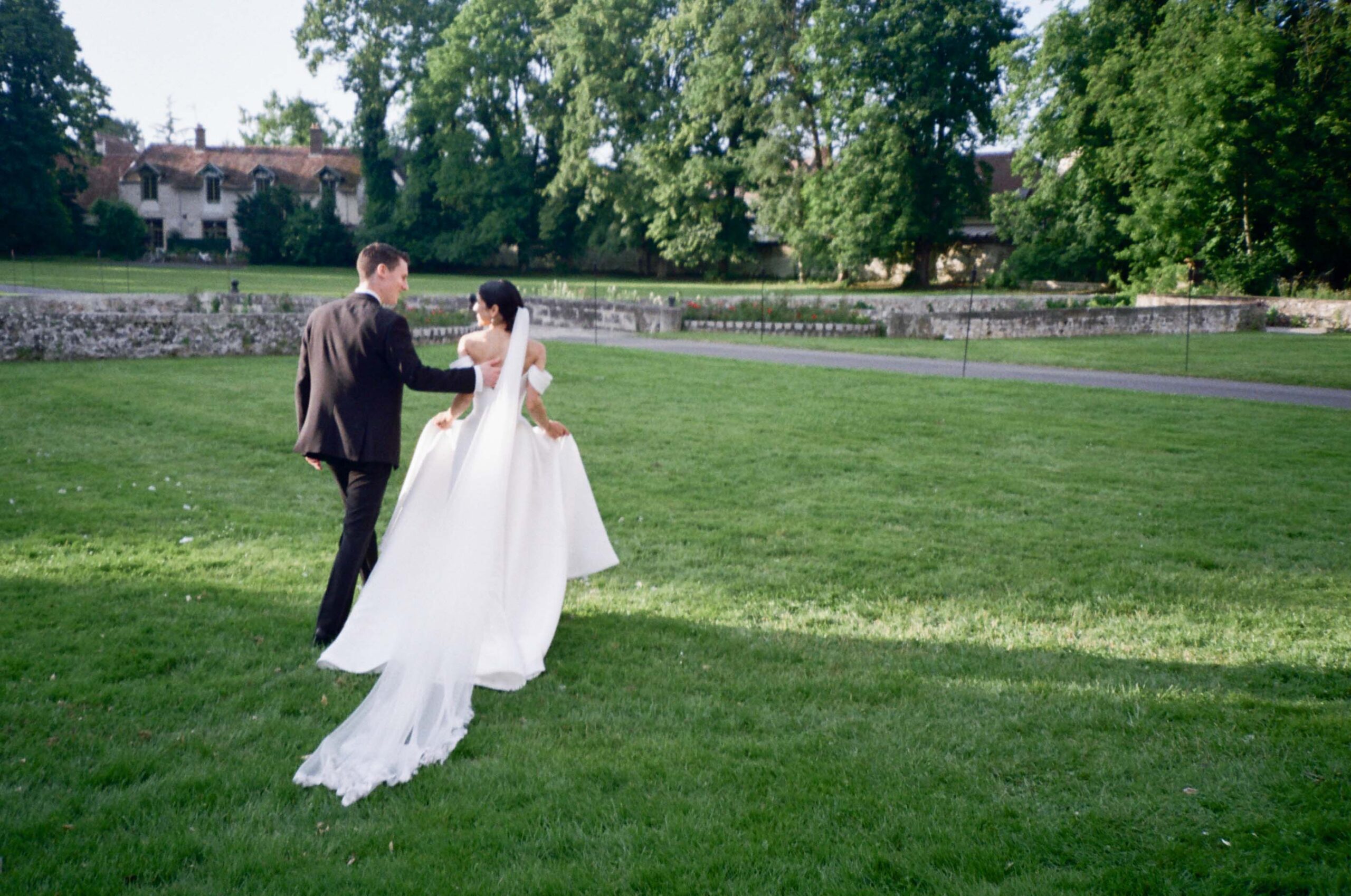
Types of Film Photography
Each type of film has its own unique character, and each film stock within that type has a different aesthetic and color tones. There’s a lot that goes into different types of film, but for the purposes of this blog I’ll briefly go over the most common types seen in film wedding photography.
- 35mm film: 35mm film is by far the most common format, and it can be either color or black and white. This type of film is typically the cheapest per shot of the types available, and is lightweight and easy to carry around. A favorite of mine and what I use most often at weddings!
- Medium format film: This film is a big bigger than 35mm film, yet still lightweight. This makes the images themselves bigger when developed, which can result in finer detail, less grain, crisper images, and higher resolution when scanned. It’s more expensive though, because there are fewer shots per roll with medium format film, and cameras that use it are less common, too.
- Instant film: Instant film is what is used in Polaroid and Fujifilm Instax type cameras. Many people love using these in creative wedding guest books because it develops instantly (hence the name). It’s not as high quality as regular film, but it’s great for fun moments and keepsakes!
If you want to know even more, here’s a very in-depth overview about film formats and differences from one of my favorite film development labs, Richard Photo Lab.
The Unique Appeal of Film Photography for Weddings
There is so much that I love about shooting film for weddings, but I’ll try to condense it!
Aesthetic Qualities
Film photography is known for its rich, natural color tones and beautiful grain which takes a flat, overly polished image into something real and emotional with grit and truth. It creates a nostalgic and timeless feel that digital photography often struggles to replicate. The aesthetics of film just can’t be beat, which is why I and many other photographers aim to emulate film in our digital work.
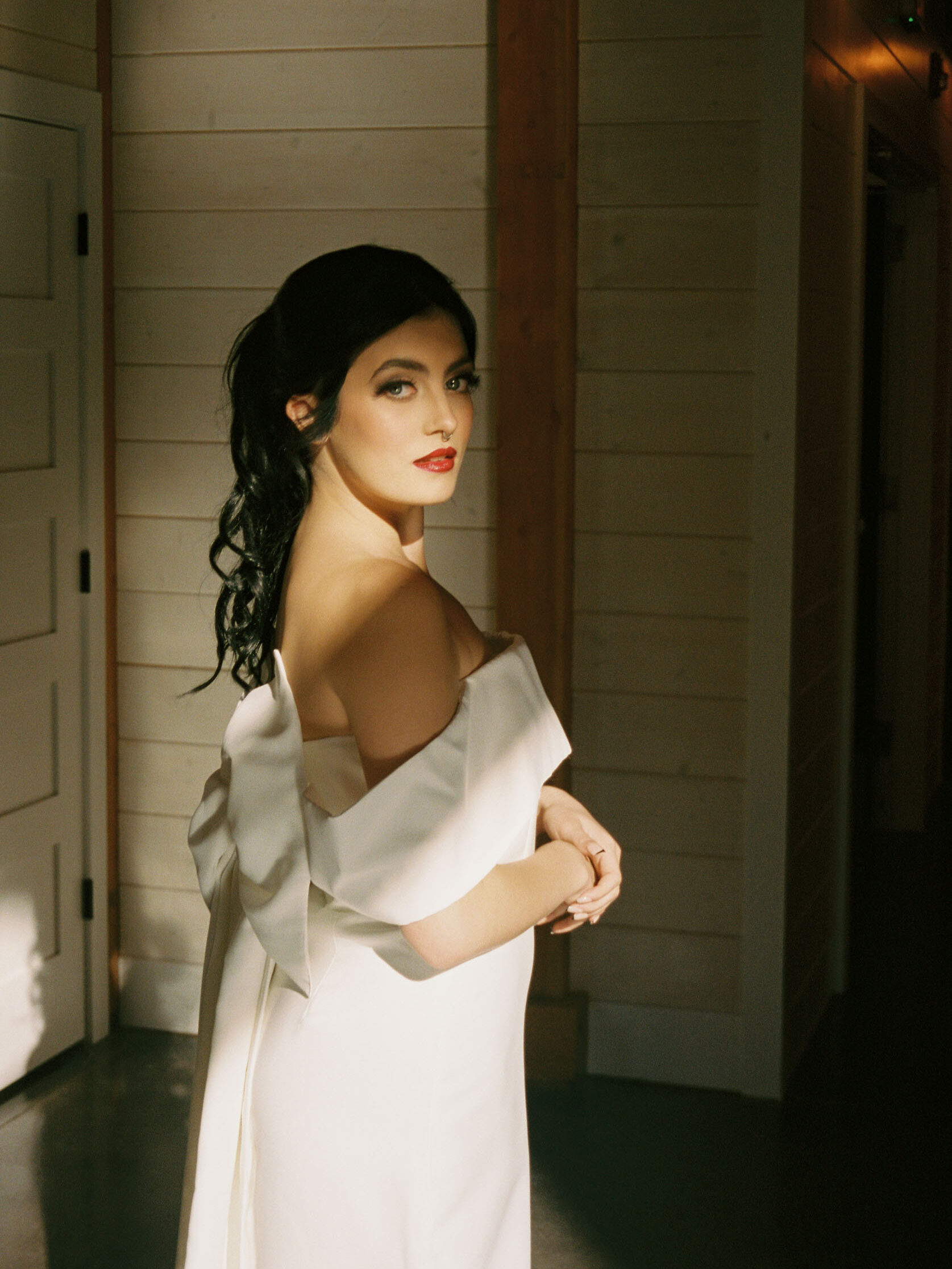
Emotional Qualities
Because you have less control over the outcome, the process of shooting on film requires a more thoughtful and deliberate approach, resulting in images that feel more intimate and genuine.
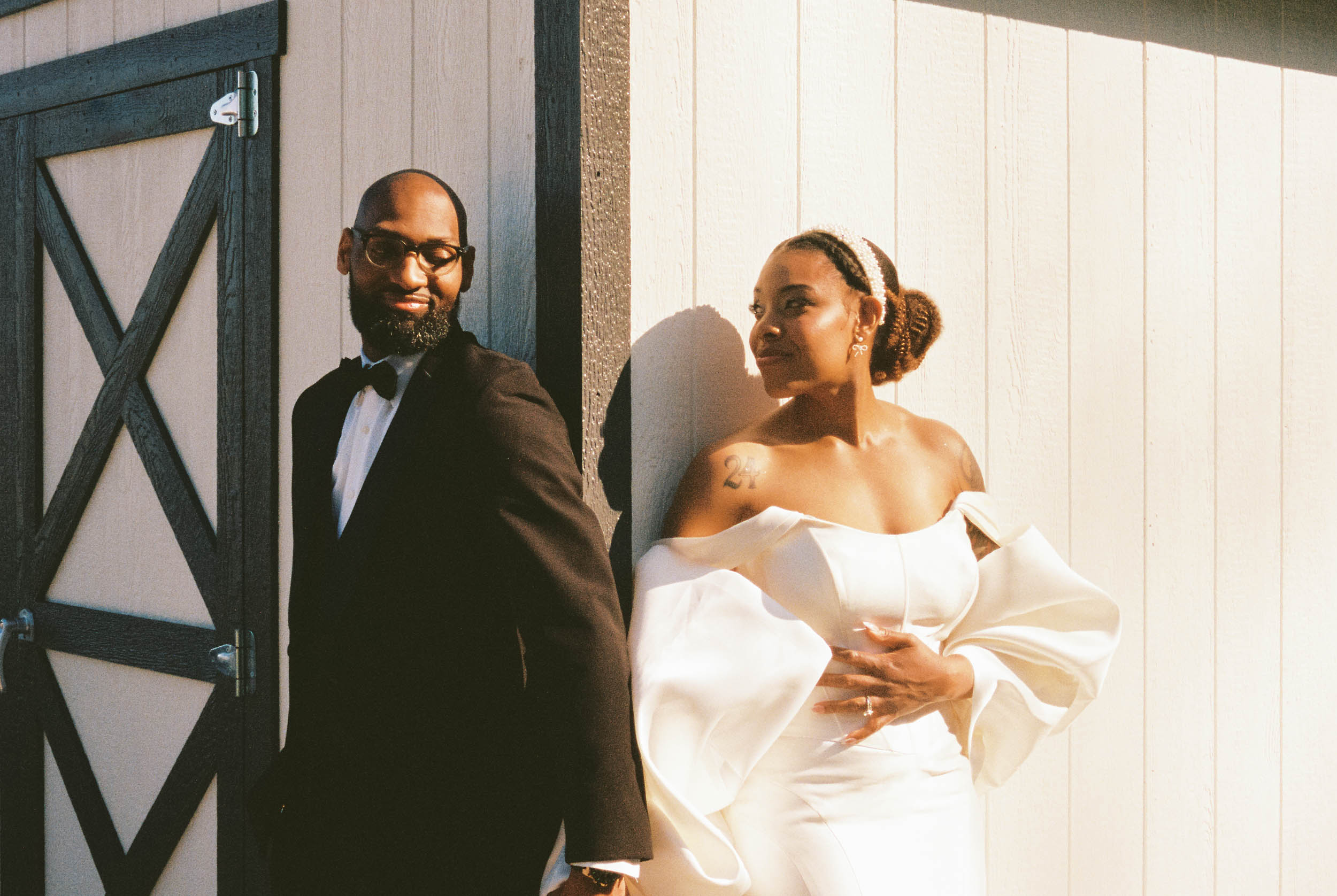
Spontaneity & Authenticity
Film photography and a documentary-style, candid approach go hand in hand! What I love about shooting on film is the element of surprise. You don’t totally know what to expect to see on a roll of film until it’s developed, and because there’s that hyper-real quality to film, it’s great to use for candid shots. I love to bring a point-and-shoot film camera around with me when shooting weddings to snap one-off shots of great reactions and cool accidental moments. I’m less attached to these photos being super stylistically perfect, and I’m hoping to just be surprised by an awesome shot that I wouldn’t have thought of setting up in the moment. A lot of my favorite images from weddings have come from film, like the ones below! Film wedding photography with a natural, candid approach can help you relax and enjoy your wedding by leaning into the unscripted moments of your day, and relive the joy later when the roll is developed!
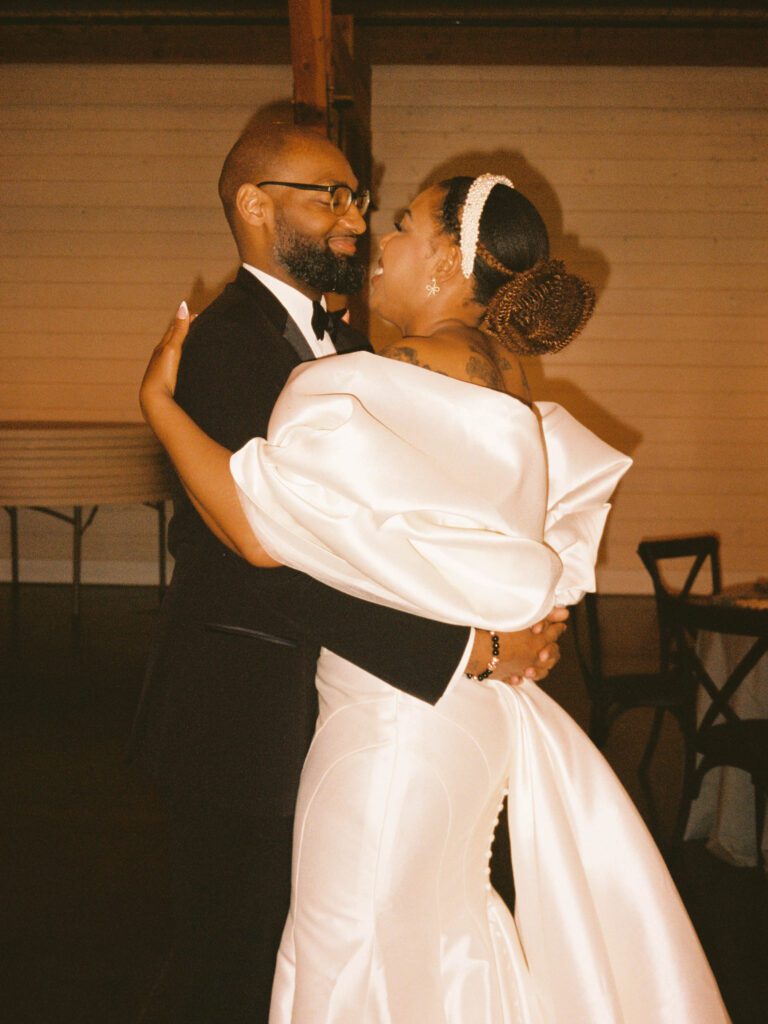
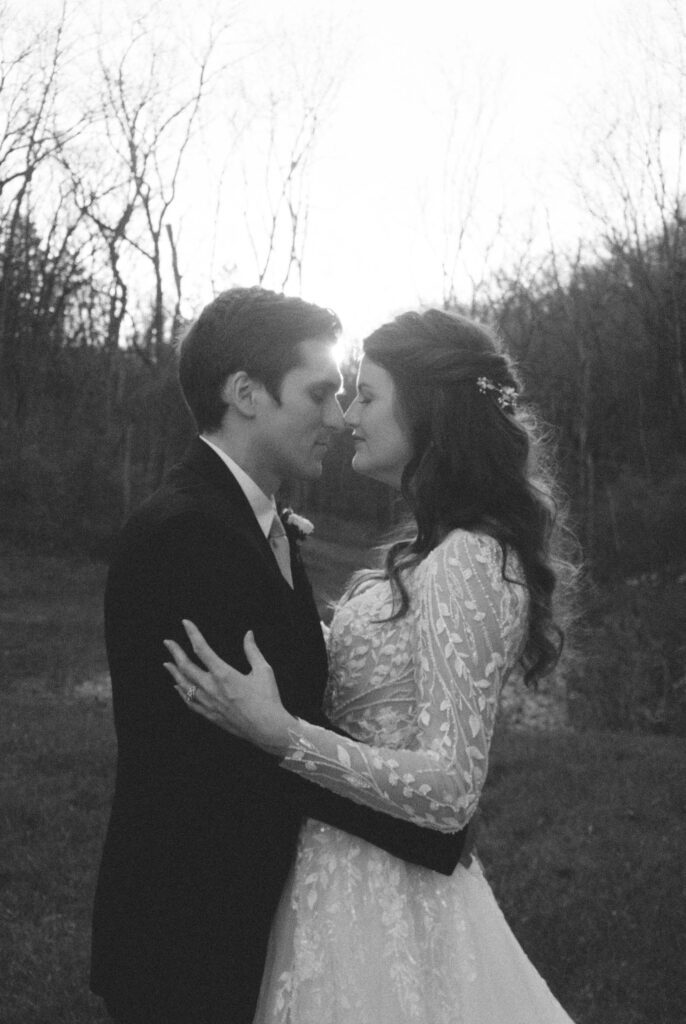
Why More Couples Are Choosing Film For Their Wedding
In an age where retro and vintage are all the rage, film photography is regaining popularity as couples seek to incorporate vintage elements into their modern weddings and create a timeless visual aesthetic. Choosing to include film photography sets your wedding apart, giving you a collection of images that are truly one-of-a-kind.
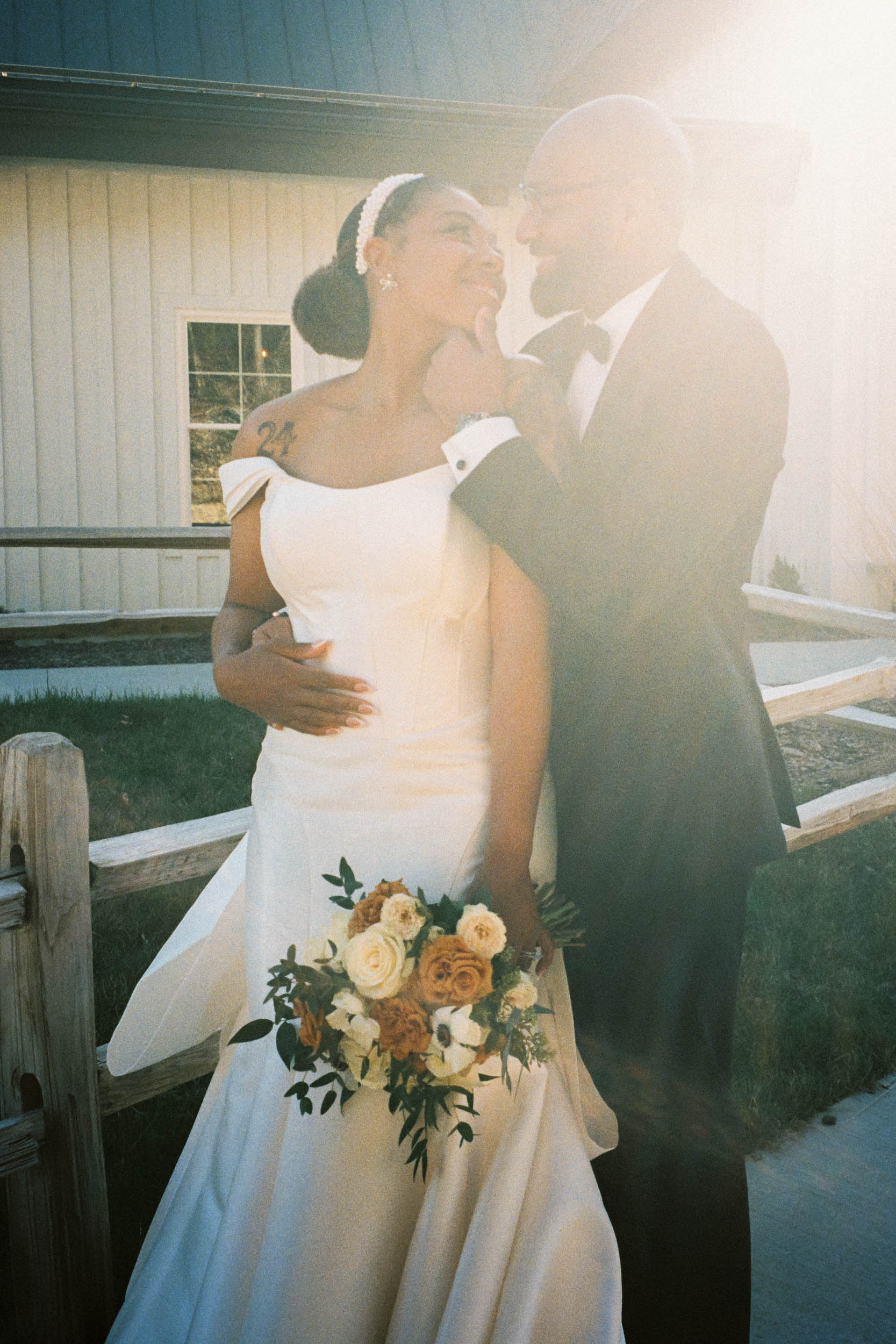
Digital vs. Film Photography
This is a topic that is super complex, but here are a few key differences to consider between digital and film photography:
Image Quality
While digital images can be extremely sharp, crisp, and clear, film offers a softness and depth that is often described as more “alive”. There’s often also a faded quality to film, either in the highlights or shadows or both, depending on the type of film used and how old the roll is. Expired film is known to be super faded or washed out for a unique look. However, if you’re going for a filmy vibe, many photographers (myself included) will edit their digital images to have a film look using their skill and knowledge of film characteristics. Take the two images below. Can you tell which one was shot on film and which is digital? (Answer at the end of the blog!)
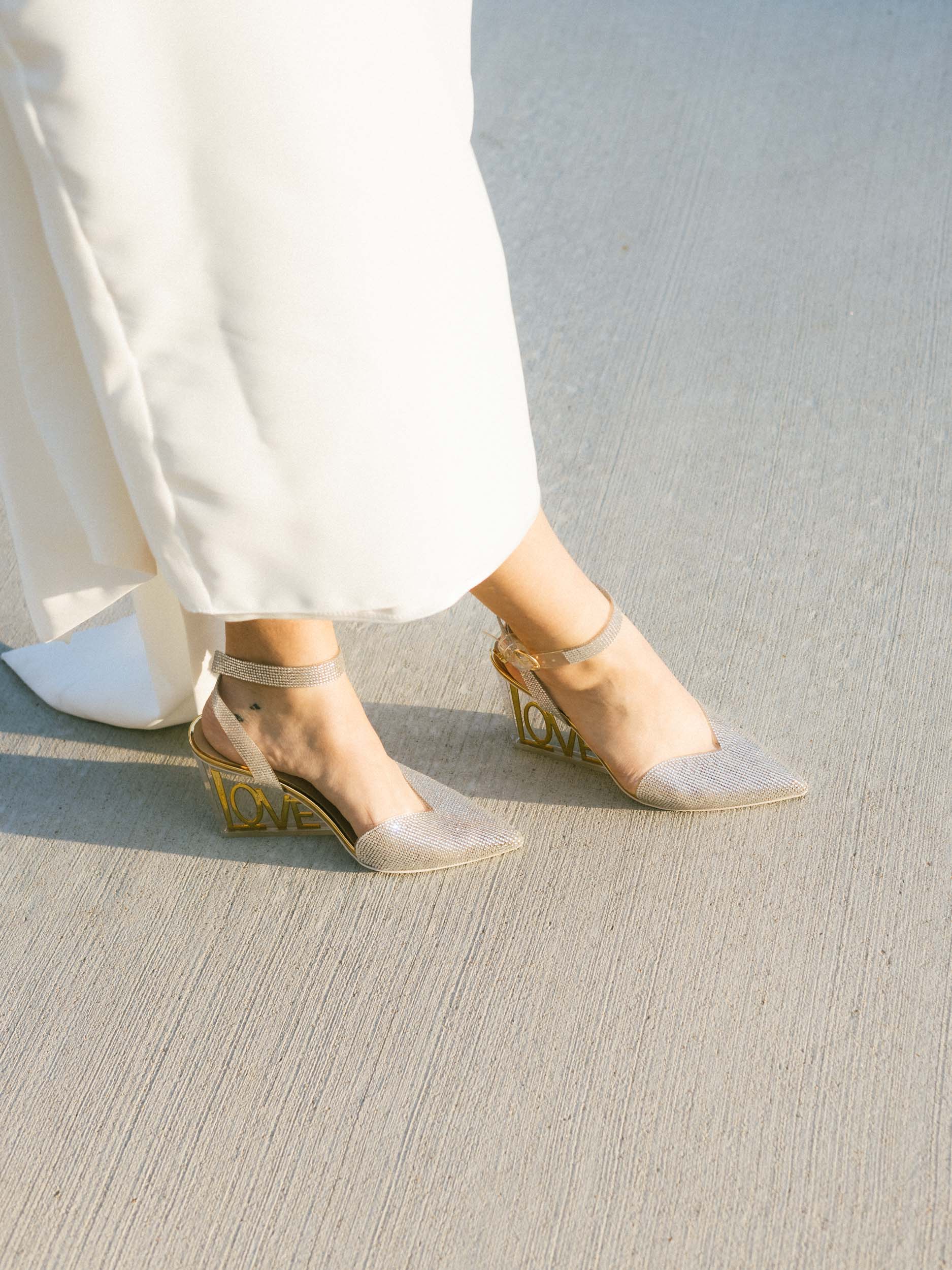
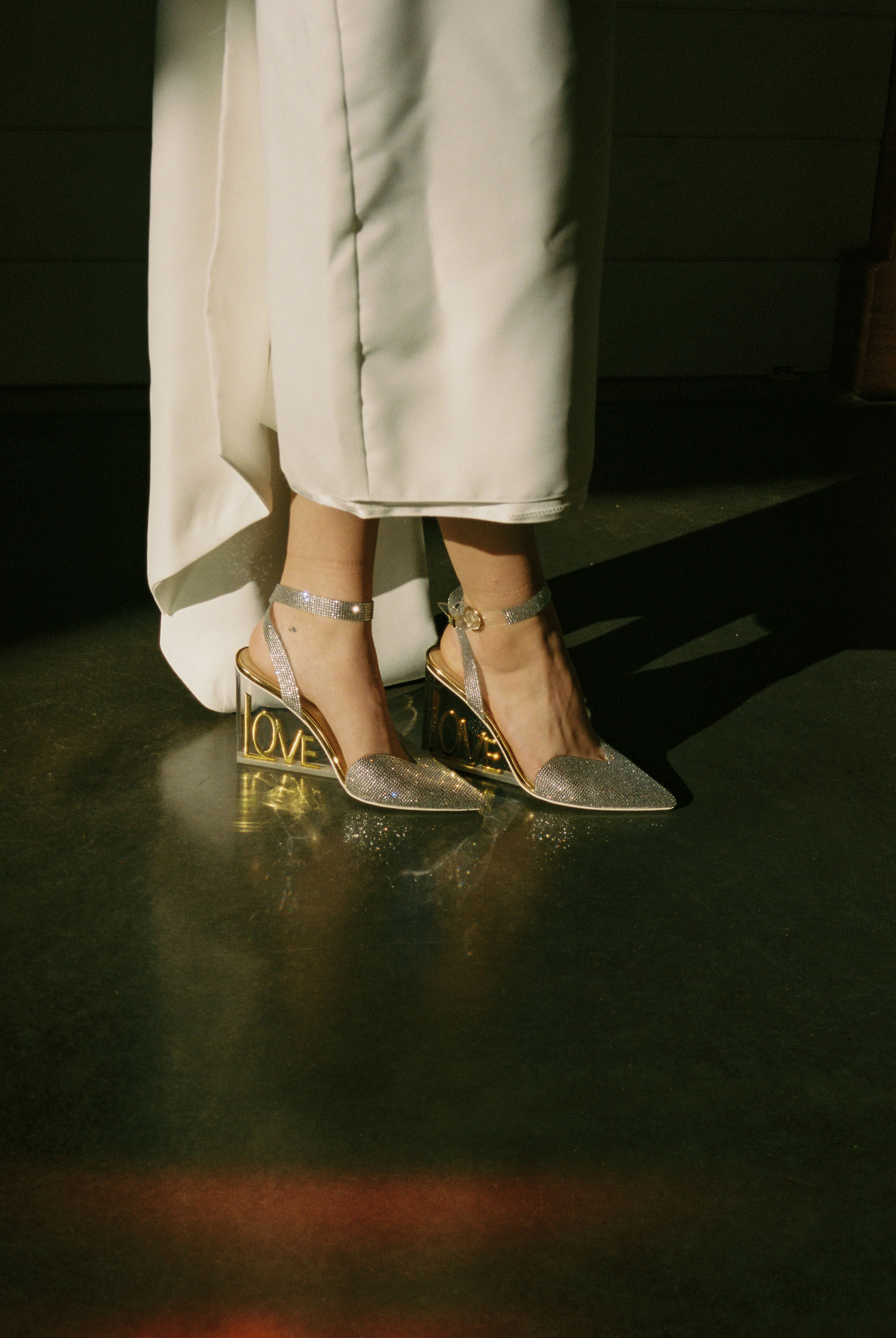
Processing and Editing
Film photos typically require less editing because the natural film look is what you’re going for anyway, while digital photos often undergo significant post-processing to achieve a specific style. While digital photos are processed digitally from the jump on special software, film has to be developed first in a lab or darkroom, and then scanned into your computer with special scanners if you do want to post-edit those photos or upload them to an online gallery. It’s a lengthier process with an extra step, and more can go wrong in the development process. 99% of the time film will turn out great if developed properly in a high-quality specialty lab, so it’s not really a reason not to use film, but it is something to be aware of.
Balancing Styles With Film Wedding Photography
Film photography is versatile enough to capture both spontaneous moments and beautifully posed portraits, giving you the best of both worlds. Imagine a candid laugh captured on film, alongside a posed portrait that looks like it belongs in a classic movie, sprinkled in with some super artistic shots that have motion blur and interesting coloration due to film’s natural reactions to light. You’ll be left with a truly one-of-a-kind, extremely memorable wedding gallery. All images below were shot on 35mm film.
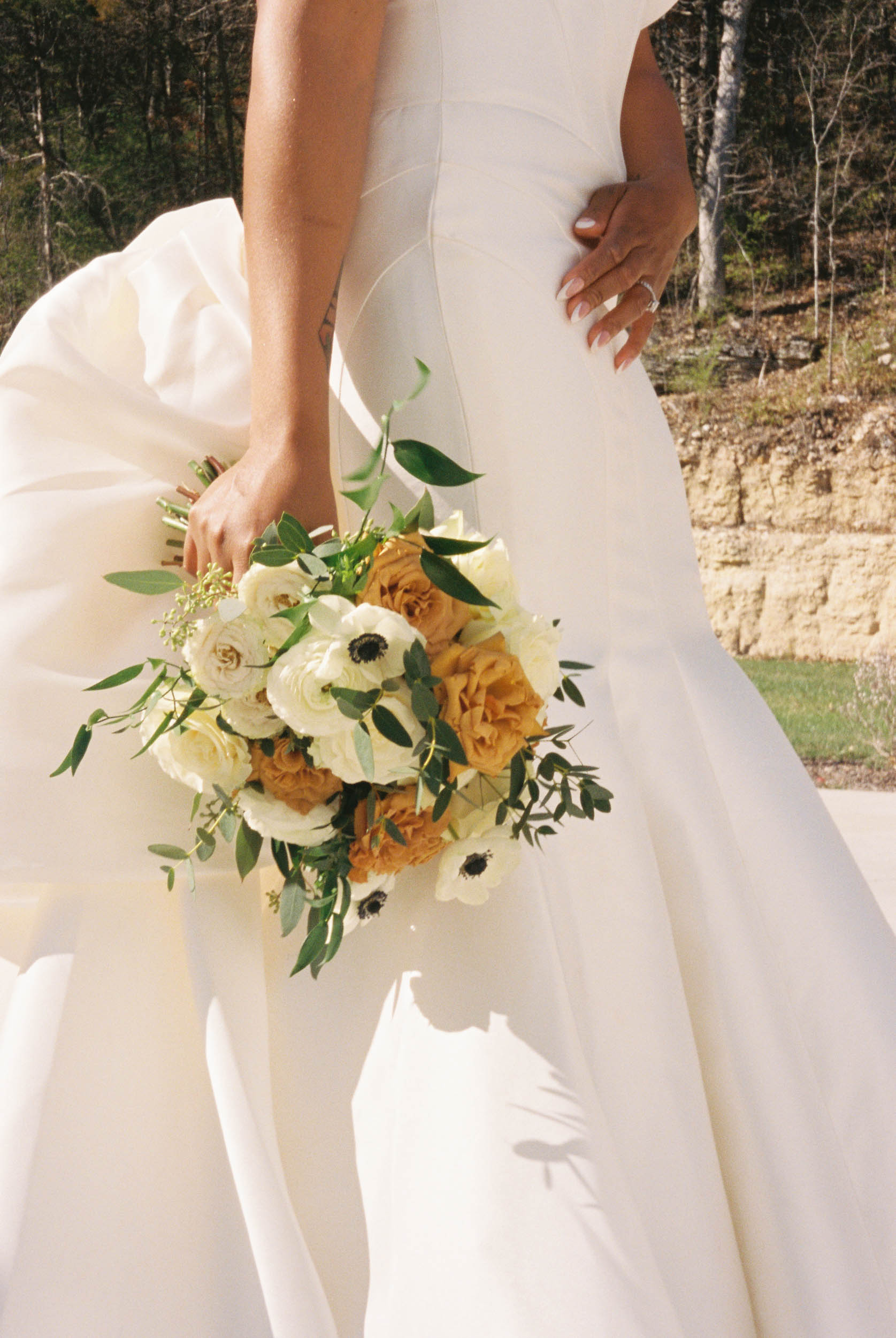
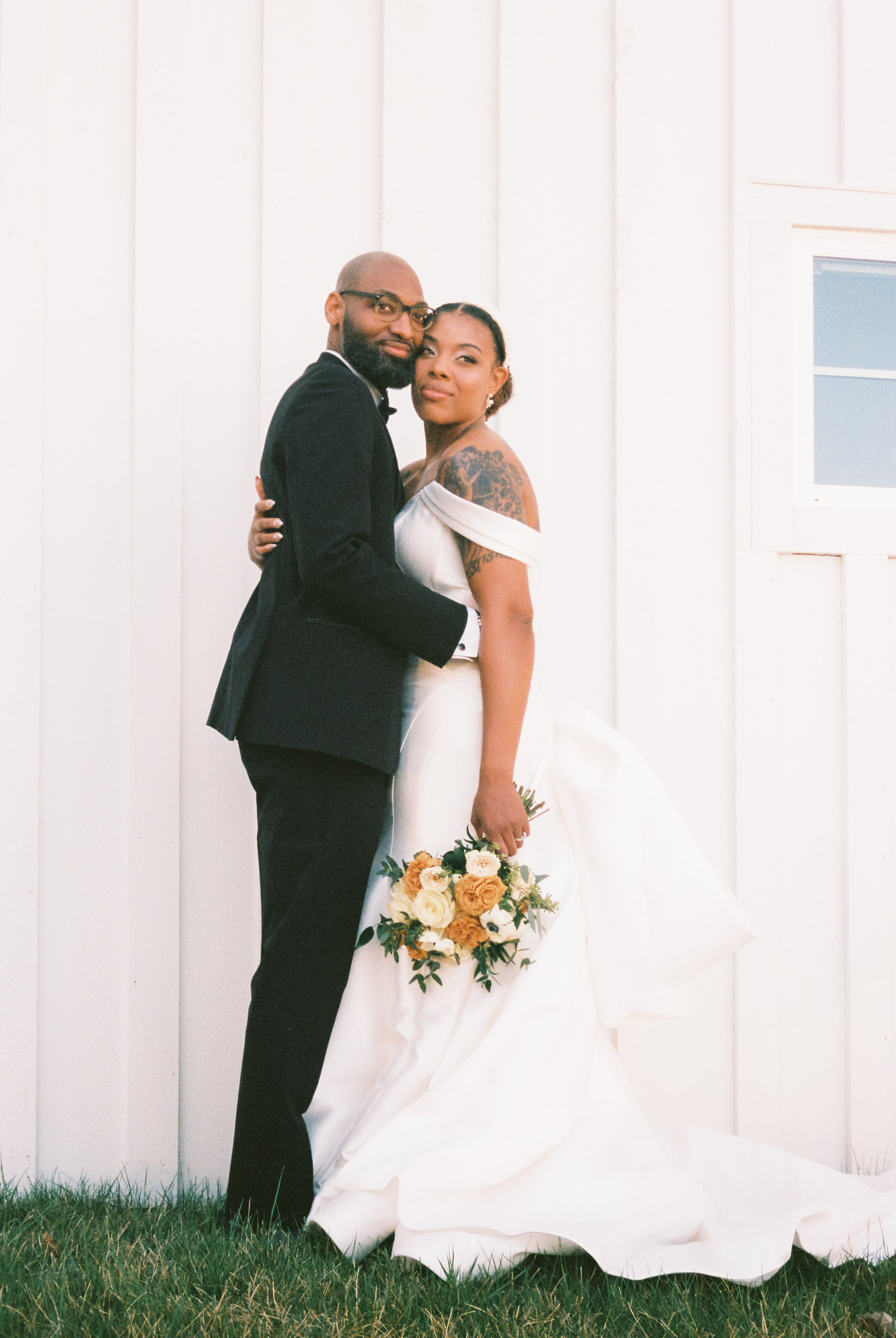

Considerations For Choosing Film Photography
- Cost: Film wedding photography can be more expensive due to the cost of film rolls and development, but many couples find the investment well worth it if you’re looking for something truly unique at your wedding.
- Film & Digital Combos: Most wedding photographers who shoot film, myself included, opt to shoot on both film and digital, with digital photography doing the heavy lifting during a wedding. This is because you’re simply able to capture more, faster, and without having to change film. In some of my wedding packages, I have several rolls of 35mm film included. In others it’s an add-on for couples who want to incorporate some film as a creative element. It’s important to remember too, that your photographer will be balancing two cameras, one film and one digital, if you opt for both. The more film you want, the fewer digital images they will be able to capture, so just keep this in mind as you consider how much film you want to represent your day.
- Time: Film photography sometimes requires more time for setup and fewer shots, making it important to plan your day carefully and allow time to change rolls and get camera settings in place.
Conclusion
From its timeless aesthetic to its unique emotional depth, film photography offers a beautiful way to capture your wedding day. If you’re looking for a photography style that’s different, raw, and creative, film wedding photography may be perfect for you! I would love to help you create your perfect wedding aesthetic with film. Get in touch to connect with me about how I do film photography for weddings! Want to see more examples of my film photography? Follow me on Instagram to see my more of my film work, and not just for weddings!
xo, Stacey
P.S. The darker image on the right was shot on film, and the brighter image on the left is digital! 🙂
- An Elegant Wedding in Chicago at the Old Post Office | Zoe & Matt
- A Bold Summer Wedding at 9th Street Abbey in St. Louis, Missouri | Erin & Bryan
- Natural Summer Engagement Photos in the Park | Taylor & Zechariah
- Wildflower Field Engagement Session on Film + Digital | Taylor & Cole
- A Summer Backyard Wedding in Connecticut: Diana & Cameron
Leave a Reply
read more
stacey
meet
Stacey is a wedding and elopement photographer based in St. Louis, Missouri and traveling internationally to document heartfelt love stories for artful couples on film & digital. My favorite things include: Taylor Swift, a good cry, and pictures that make you feel timeless.
get to know me →
dream it up with me
Whether you’re planning a vibey, intimate wedding or eloping somewhere meaningful, I’d love to document your day with artful honesty.
